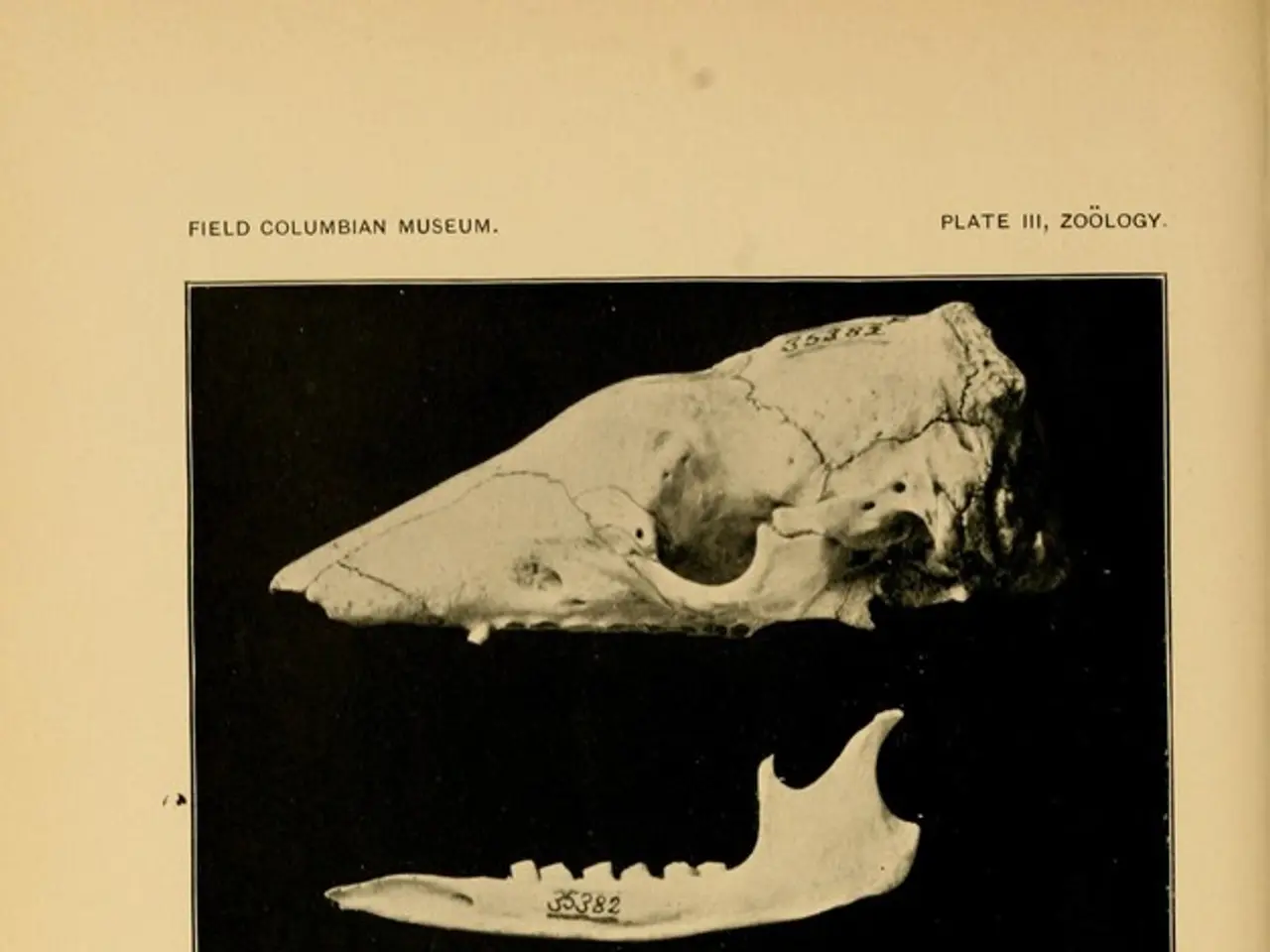The Insight into the Natural Strength of Certain Individuals' Bones and Its Implications for the Medical Field.
In the ongoing quest to harness the potential of super-strong bones, researchers are faced with a myriad of challenges and opportunities. The study of these extraordinary bones, found in individuals such as athletes and the elderly who defy typical age-related decline, could revolutionise medical science and transform healthcare.
The key to understanding super-strong bones lies in the intricate interplay of genetic, environmental, and hormonal factors. Genetic mutations, such as those affecting bone formation and mineralization, play a crucial role. For instance, mutations in the ALPL gene that impair alkaline phosphatase, an enzyme essential for mineralization, can lead to softer bones. On the other hand, proper functioning of genes regulating osteoblasts and osteoclasts, like those involved in producing osteoprotegerin and RANK-ligand, is essential for maintaining bone strength by balancing bone formation and resorption.
Lifestyle and diet significantly contribute to bone strength. Activities involving weight-bearing and manual labor, as well as nutritional factors rich in calcium, collagen, and other essential minerals, support bone matrix integrity and mineral density.
Hormones, such as estrogen, growth hormone, thyroid hormone, and sex hormones, also play significant roles in bone health. They stimulate osteoblast activity, promoting new bone formation and inhibiting bone resorption by osteoclasts.
By understanding these influences, researchers can pave the way for innovative treatments in bone diseases. Targeting specific genes or enhancing hormonal activity could improve mineralization, balance bone resorption and formation, and treat conditions like osteoporosis. Epigenetic therapies could rebalance osteoclast and osteoblast activity, while nutritional and lifestyle guidance could be integrated into preventive strategies.
The study of super-strong bones could also lead to improvements in prosthetics and implants, making them stronger and more durable. However, replicating super-strong bones in the general population presents challenges due to ethical and technical hurdles associated with genetic engineering and therapies.
Despite these challenges, the hope is that one day, the secrets of super-strong bones will be accessible to all, transforming lives for the better. The era of one-size-fits-all medicine is giving way to more personalized, precise interventions, akin to a bespoke suit perfectly fitted to one's unique dimensions.
An evolutionary perspective suggests that survival throughout human history often depended on physical resilience, potentially favouring those with stronger bones. As we continue to unravel the mysteries of super-strong bones, we may find ourselves on the cusp of a new era for bone health therapies and regenerative medicine.
- The genetics behind super-strong bones, including mutations affecting bone formation and mineralization, could represent significant targets for research in the field of medical science.
- Nutritional factors, such as those rich in calcium, collagen, and other minerals, support bone strength and could be integrated into advice for promoting healthier lifestyles.
- Hormones, including estrogen, growth hormone, thyroid hormone, and sex hormones, play a crucial role in bone health by stimulating osteoblast activity, promoting new bone formation, and inhibiting bone resorption.
- In the future, epigenetic therapies could potentially rebalance the activity of osteoclasts and osteoblasts, leading to innovative treatments for bone diseases like osteoporosis.
- As our understanding of super-strong bones grows, we may see improvements in the development of prosthetics and implants, making them stronger and more durable for the medical-condition management, health-and-wellness, fitness-and-exercise, and nutrition sectors.




